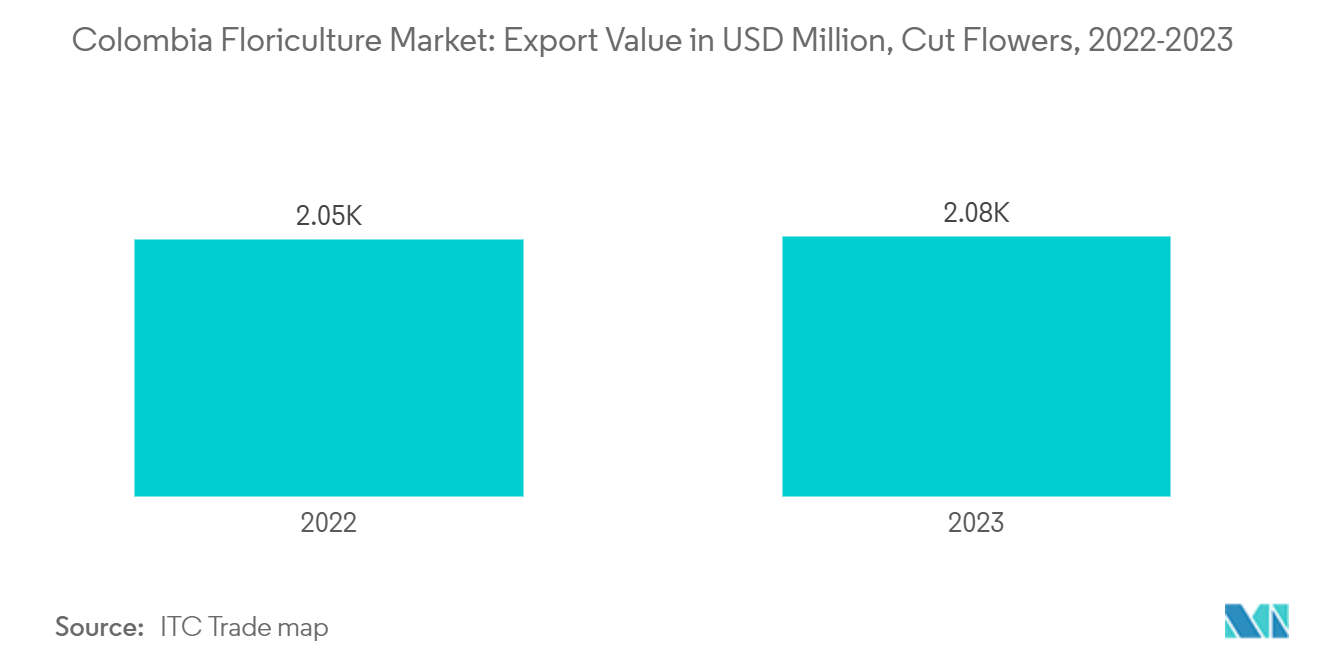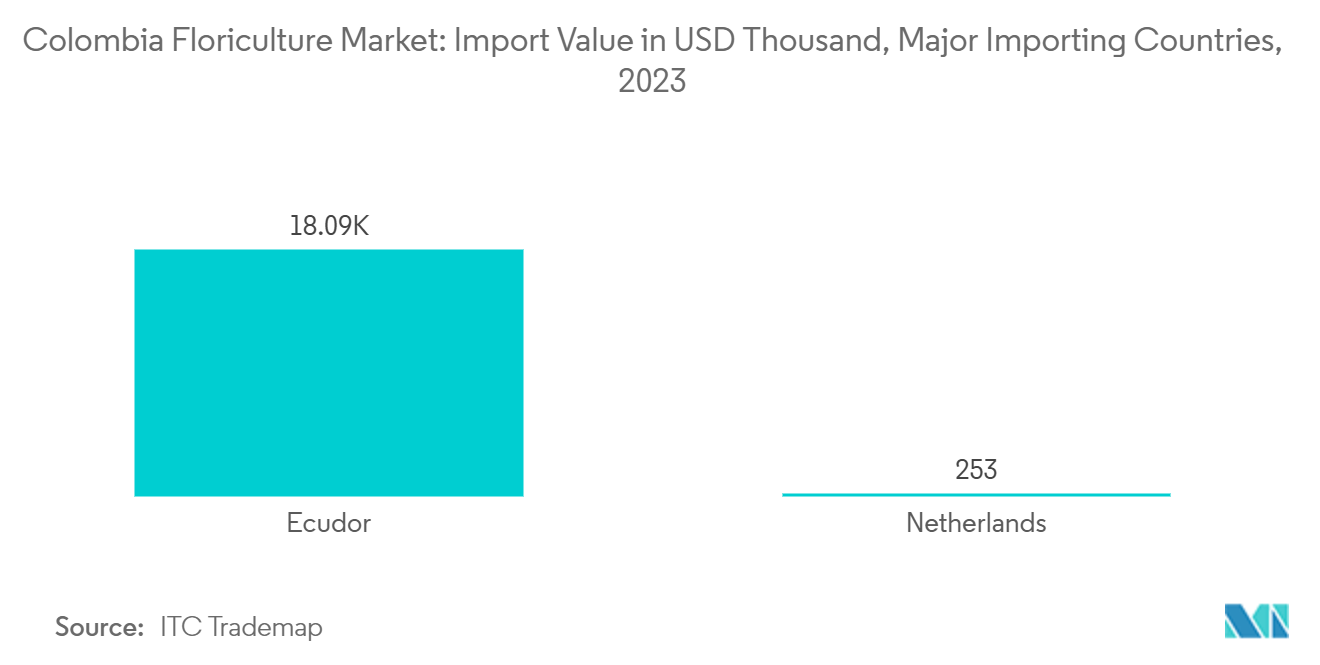Market Trends of Colombia Floriculture Industry
Rising Export Potential of Cut Flowers
- Colombia is the world's second-largest flower exporter, trailing only the Netherlands. As per the ITC trade map, in 2023, Colombia constituted 19.7% of the global cut flower export market. The nation's primary exports include roses, carnations, chrysanthemums, and lilies. International demand for these flowers remains steady year-round, with notable surges during peak occasions like Valentine's Day and Mother's Day, amplifying export volumes. Moreover, the growing global appetite for flowers, coupled with competitive pricing, significantly boosts the export potential of Colombian blooms.
- Colombia's cut flower exports have shown a consistent upward trajectory, with key markets being the United States, Canada, the United Kingdom, the Netherlands, and Japan. Recent data from the ITC trade map highlights an increase in Colombia's cut flower exports, rising from USD 2,052 million in 2022 to USD 2,080 million in 2023. This uptick is largely attributed to heightened demand from the U.S. and the U.K., fortifying Colombia's export market and propelling overall market growth.
- Moreover, various countries' export-boosting initiatives are fueling market expansion. For instance, in 2023, a partnership between ProColombia and Colombia's business association reinforced the nation's position as a premier global flower exporter. As reported by the ITC trade map, Colombian flower exports totalled USD 2,080 million in 2023, reflecting a 1.3% uptick from the previous year. Consequently, bolstered by rising demand and supportive initiatives, Colombia's burgeoning exports are poised to drive market growth in the coming years.

Government Initiatives and Competitive Edge Propel Market Growth
- The floriculture industry in Colombia has seen significant volume growth and has become a sophisticated, dynamic, and diverse sector. Continuous innovation and market exploration characterize the Colombian flower industry, which benefits from government support. Various national organizations enhance the floriculture sector by streamlining regulatory processes, refining export and import guidelines, and providing equipment subsidies. These initiatives encourage growers to modernize, address labor challenges, and meet consumer quality standards. For example, in April 2024, the Colombian Agricultural Institute (ICA) introduced a new procedure for importing in vitro plants for research. This initiative aims to ensure phytosanitary safety, expedite import processes, and shorten product release times into the national commercial system.
- Additionally, the increasing demand for flowers has led to growing imports into the country, raising the need for supportive flower import regulations in Colombia. According to UN Comtrade, in 2023, Ecuador was the leading country of origin for flower imports to Colombia, with about USD 18 million. The Netherlands ranked second with over USD 253 thousand.
- The rising global demand for Colombian flowers also supports the industry's expansion. The Colombian flower sector enjoys several competitive advantages: abundant land, favorable climate, skilled labor, robust infrastructure, and beneficial trade agreements with the United States. According to Asocolflores, the Association of Flower Exporters, Colombia commands 32.2% of the global flower and plant market, boasting over 10,000 hectares dedicated to flower cultivation. Additionally, the growing agricultural labor force further propels the industry's value and volume. The World Bank reported that in 2022, agriculture constituted 14.64% of Colombia's total employment. Asocolflores also noted that Colombia's floriculture sector provided 200,000 formal jobs in 2022, with 110,000 being direct positions. Such factors coupled with supportive government initiatives will drive the market's growth during the forecast period.



